- 注册
- 登录
- 小程序
- APP
- 档案号


MVRDV · 2022-04-07 15:24:44
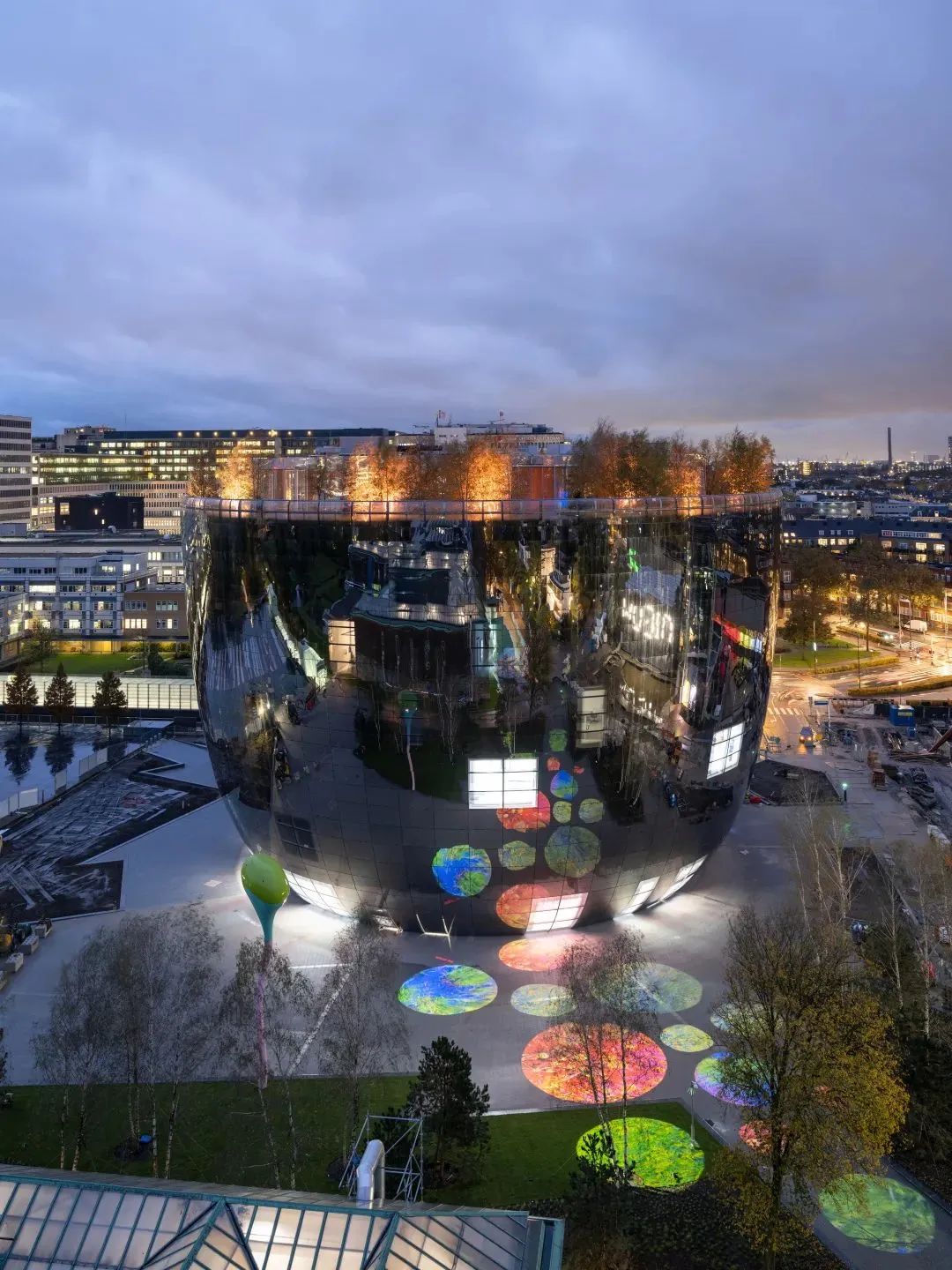

Winy Maas 这个在当代荷兰建筑界极其响亮的名字与其联合创办的 MVRDV 建筑规划事务所紧密相连。MVRDV 已迈进了第 29 个年头,从第一个住宅区项目 WoZoCo 对于折衷主义的现代表现到挑战垂直堆积功能性的汉诺威世博会荷兰馆,无一不表现着 Maas 及 MVRDV 在“颠覆和重塑”中革新的悬垂化实践。而在这场独特的对谈中,Winy Maas 邀请到他极为欣赏的瑞士视觉艺术家 Pipilotti Rist,两人结缘于 MVRDV 设计的全球第一个向公众开放的艺术仓库—鹿特丹博伊曼斯 · 范 · 伯宁恩公共艺术仓库 (Depot Boijmans Van Beuningen)。
Winy Maas, a big name in Dutch architecture that is closely associated to MVRDV, an architecture office he co-founded in 1993. In the past 29 years, from the first residential project WoZoCo, a modern expression of eclecticism, to the Dutch pavilion at the Hannover Expo, which challenges the functionality of verticality, these works demonstrate Maas and MVRDV's innovative practice through subversions and reinventions. In this unique conversation, Winy Maas invited Swiss visual artist Pipilotti Rist, whom he admires a lot and collaborated on the world's first publicly accessible art warehouse - the Depot Boijmans Van Beuningen in Rotterdam, designed by MVRDV.
Depot 独特的反光外墙及碗型设计在白日间将建筑视觉化隐身,人与自然所形成的城市动态场面成为建筑中流动的情节;到了夜间,Pipilotti Rist 运用斑斓的灯光及影像装置使得建筑置景为童话仙境—光影将建筑和周遭原子化,凝固的建筑和倾泻的投影之间被打造出一大片明亮的脉动中的催眠层,人们漂浮着、跳跃着感知空间所迸发的进化。在 Winy Maas 与 Pipilotti Rist 的一小时对谈中, Maas 沉淀了 MVRDV 的过往实践,以一种私人化的艺术叙述与 Rist 一同延展关于公共建筑、艺术装置及科技的思索。
Depot's unique reflective façade and bowl-shaped design make the building invisible during the day, creating flowing stories on the architecture with dynamic urban sceneries of people and nature; at night, Pipilotti Rist uses a variety of lights and video installations and turns the building into a fairy tale wonderland – the lights and shadows “atomized” the building and its surroundings, a bright, pulsating layer of hypnosis is created between the solidified building and the moving projections, where people can “float” and jump to feel a sense of evolution of the space. In an hour-long conversation between Winy Maas and Pipilotti Rist, Maas draws on MVRDV's past practice and extends his thoughts on public architecture, art installations and technology with Rist in a personal and artistic narrative.
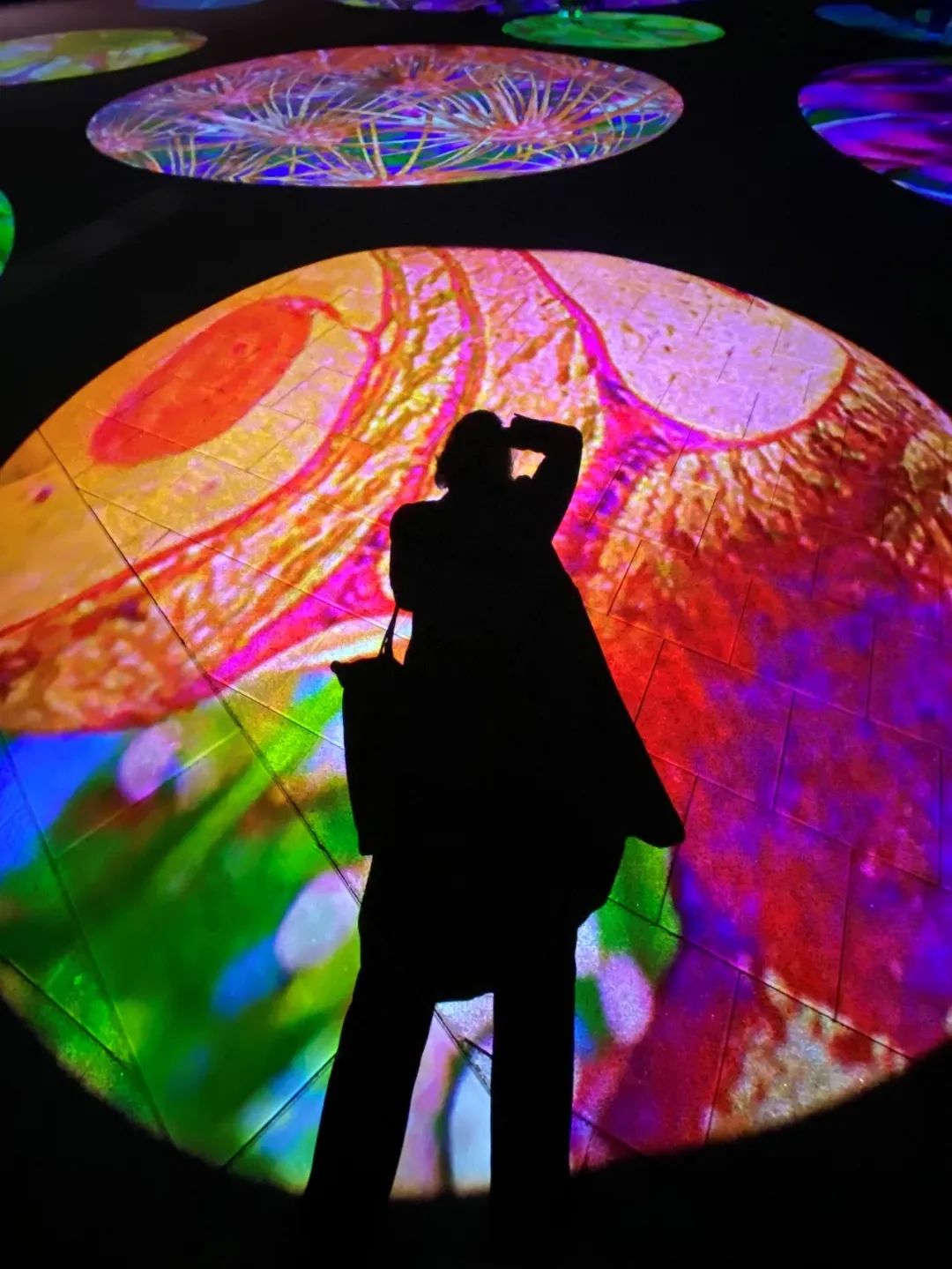
建筑与光影的
双重叙事
A dual narrative of architecture, light and shadow
本文收录自3月MVRDV客座主编专刊
This article is included in IDEAT CHINA X MVRDV
Guest Ed itor-in-Chief Sp ecial issue in March
Winy:很高兴可以借此机会一同回顾我们在博伊曼斯 · 范 · 伯宁恩公共艺术仓库的合作项目。在设计这一前所未有的项目期间我们进行了大量的创新和试验。项目开始前,我已经熟知了 Pipilotti Rist 作品,其中印象深刻的是作品 Ever is Over All 中砸玻璃一幕,我也曾拜访博伊曼斯·范·伯宁恩博物馆(Museum Boijmans Van Beuningen),仰卧观看Pipilotti 的 Let Your Hair Down,画面中缤纷的花瓣如童话般醉人,其中的冲突与破碎又夹杂着一份戏剧张力。
Winy: I think the Depot is a good starting point of this conversation. It is nice to talk about how we collaborated, what artistic issues we faced. Since everything for the depot is a unique design, we had to invent and experiment a lot. We have known each other for a long time, through the galleries and the museums. Because of the artwork, I remember this smashing windows video. I also visited your ‘Let Your Hair Down’ installation in the Boijmans museum in Rotterdam. It was inspiring and interesting, colourful and like a fairytale almost.
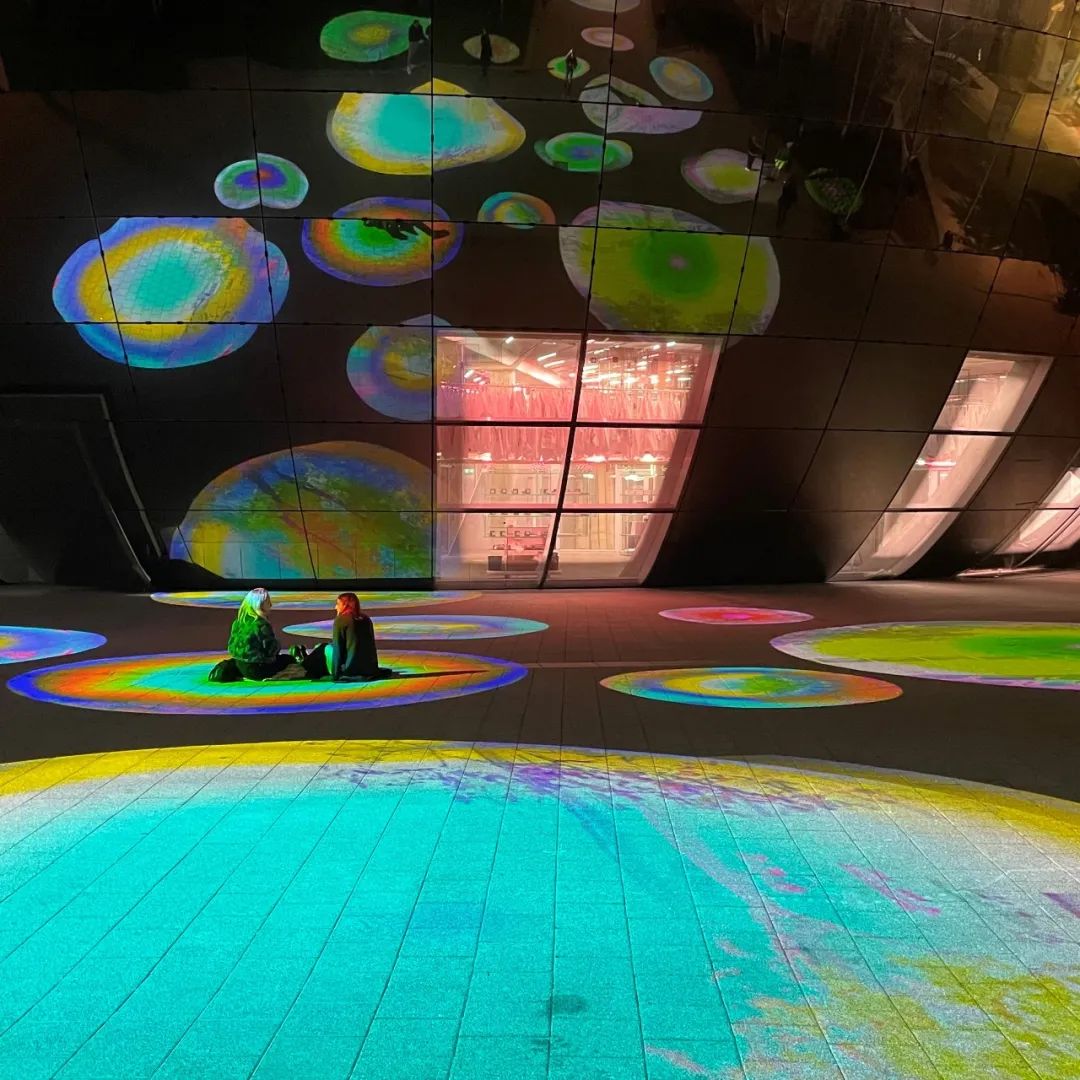
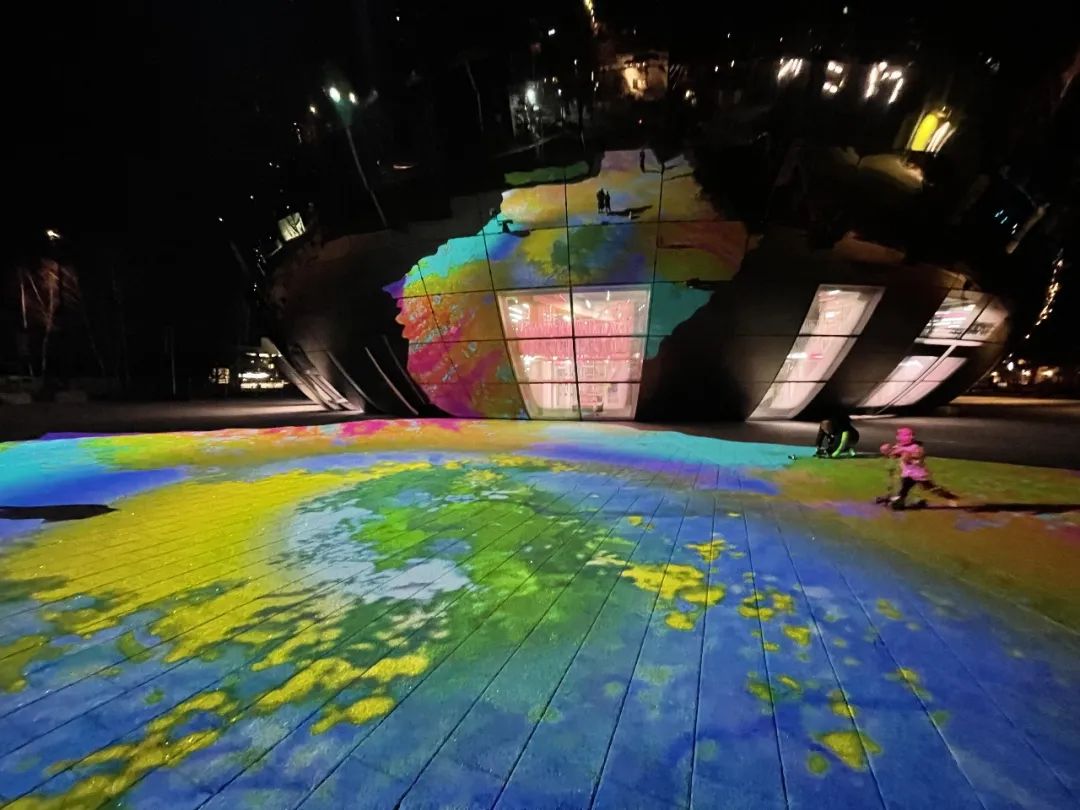
▲Pipilotti Rist 为 Depot 设计的灯光装置结合了影像与环境艺术的思考,这一装置也兼具视觉照明功能,在夜间照亮了仓库外的部分公共空间为到访者带来了独特的趣味体验。
Pipilotti Rist's lighting installation for Depot combines imagery and environmental art thinking. The installation also serves as visual lighting, illuminating parts of the public space outside the warehouse at night and providing a unique and interesting experience for visitors.
Pipilotti:我是通过2000年汉诺威(Hannover)世博会的荷兰馆第一次了解到你的设计作品,从那时起我也记住了 MVRDV 这个名字。那个项目所展现的堆叠与层次在当时是非常前卫且激进的,同时你们也赋予了它多重的主题:可持续性、文明、自然以及三者的融合。
Pipilotti: I know your work since the Expo 2000 Pavilion you made for the world expo in Hannover. The stacked building, the layers. From that day on I remembered the name of your company, MVRDV. (It was) quite a progressive building for that time. You addressed so many topics: sustainability, civilization, nature and where they overlap.
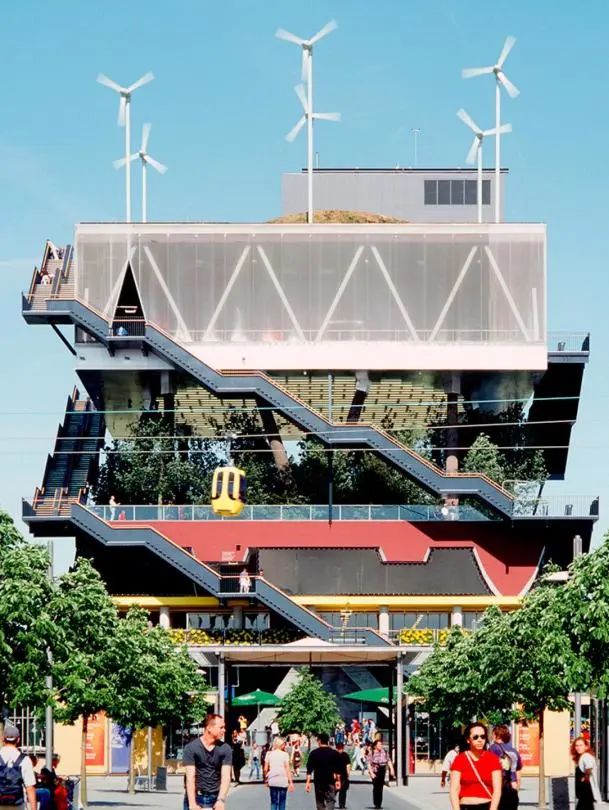
▲Expo 2000 德国汉诺威世博会荷兰馆
Expo 2000 Pavilion
Winy:我们在着手于人类的趣味性以及对自然热爱的共识正是我们默契的来源。从你为 Depot 所设计的灯光装置中我也感受到了你对于不同领域的融合,从这个角度来看,这件装置不只是赏心悦目的花朵和色彩,我还看到了很多类似条码状的建筑景观。你是否针对这个项目做了不同类型的景观研究?
Winy: This is where we match, this playfulness of human beings and the love for nature. I have a feeling the colourful light installation you designed for Depot is about that. In this case the installation is more than about just flowers and beautiful colours. I see more landscapes, barcode landscapes. Am I correct in saying that for this installation you explore different kinds of landscapes?
Pipilotti :用“景观”(Landscape)来形容这个装置并不恰当,实际上在创作过程中我试图避免传统的地平线视野。在项目中运转的摄影机时而向下,时而向上,来回移动。画面中我没有采用能显示出场景中地面的图像,因为我们需要考虑观众会从不同的地方步入这个灯光装置中,所以需要使用多方向感的思维来设计。
Pipilotti: Landscape is not a good word for this installation, because I try to avoid the horizon. The camera work goes downwards and upwards, I can’t use images that have a clear bottom, or end, because you never know from which angle people will walk into the light installation. It has to be multi-directional.
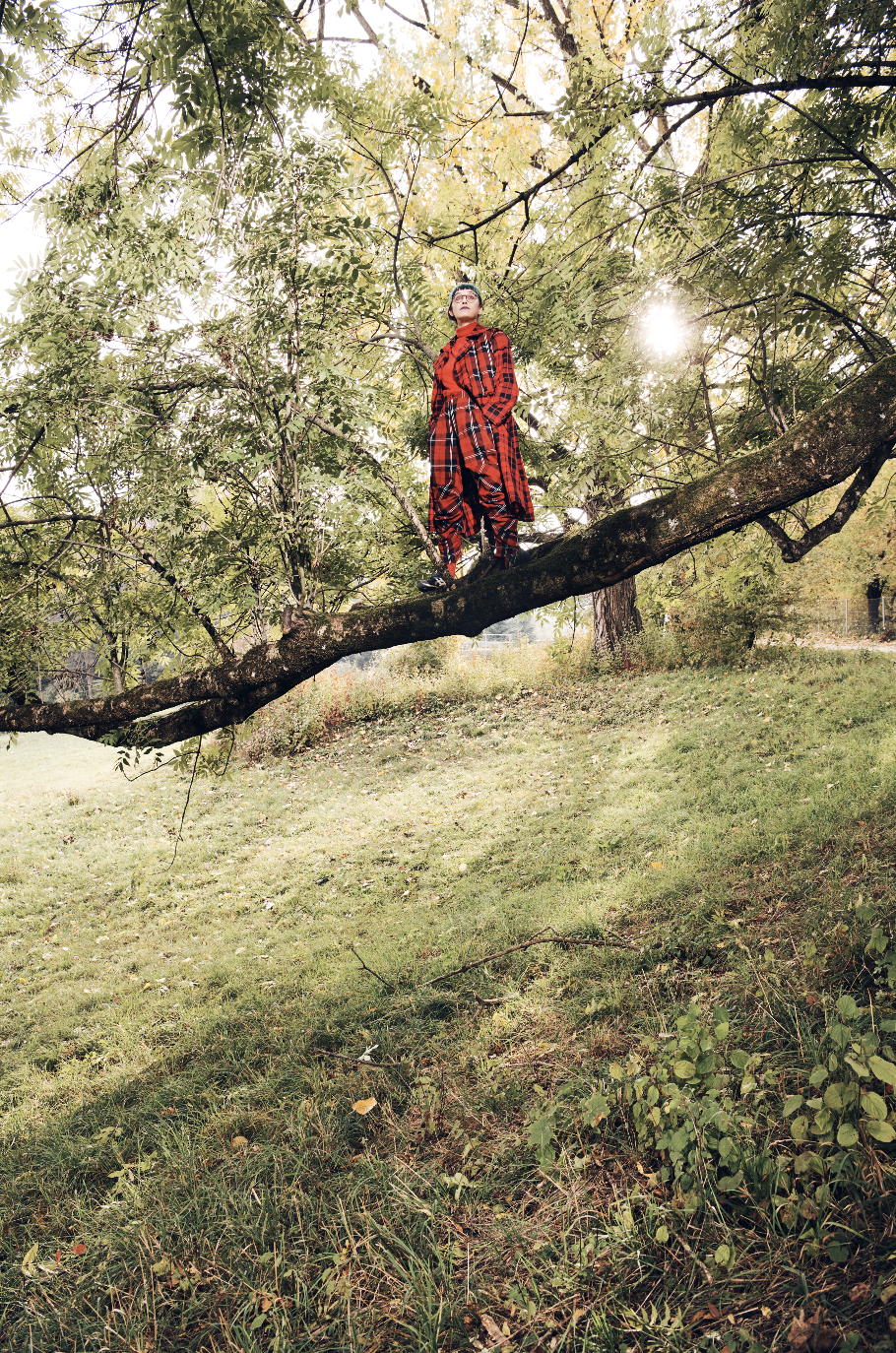
▲Pipilotti Rist
Winy:当规避地平线视野时,这一新颖的视角会营造出无垠感,因而在 Depot 的设计中我也力图将地面与建筑相融合,形成了一种没有地平线的景观状态。你如何看待其设计效果?当你参与创作的时候你是否对这个三维化的景观满意?
Winy: When you avoid the horizon, this gives me a feeling of infinity. Therefore, in the Depot I designed the building in such a manner that images on the floor are mirrored on the ceiling. For me they blend into one landscape without a horizon. How does this work for you? Are you happy with this kind of three-dimensional landscape that appears when you do this?
Pipilotti :当我观察 Depot 时所看到的是建筑外立面透射出的影像与地面形成了蝴蝶的形态,也可以将其比喻为一本打开的书,而我所设计的灯光装置投射区域和建筑本体幻化为蝴蝶的双翅。但你说的没错,这两者中间有一条分界线,也可以看作是另一种地平线。
Pipilotti: I consider the work more like a butterfly. Our projection is on a limited area, it’s like a wing. The building you designed makes the other wing. You can also compare it to opening a book. Now it has this book quality, or the butterfly quality, but you are right, there is the line in between you could also treat that line where it mirrors as the horizon.
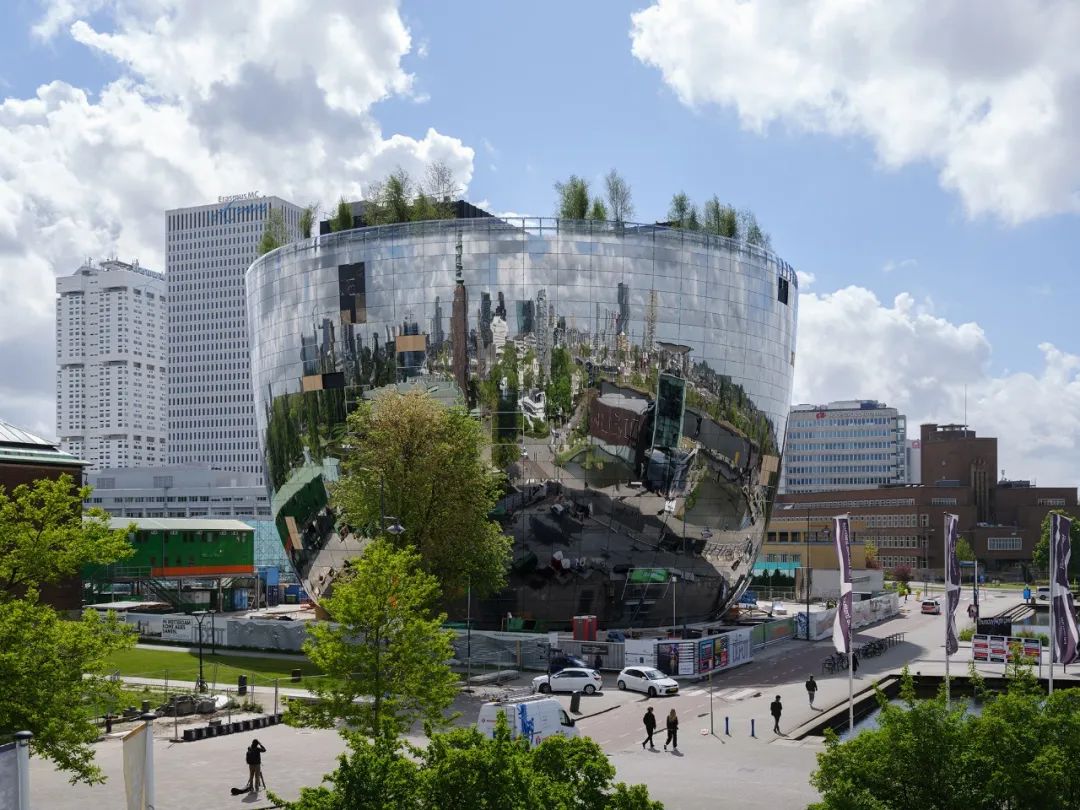
Winy:某种意义上来说,我们的合作项目像是一个排列组合的游戏,建筑和环境都处在不断的变化中,那么这会是你未来几年想要保持探索的方向吗?
Winy: It is in a way a game like you say. It’s changeable or composable. That is also the plan right for the years to come?
Pipilotti :是的,对我来说针对公共空间的创作是有挑战性的。当人们特别抽出时间参观博物馆时,对作品已经有了一定的准备和期待,但观众并不会对公共空间抱有特别的预期,所以设计需要讨喜并服务大众。这个项目极具趣味性,但最终需要把作品交给观众让他们完成余下的部分,当观众参与进来作品才会真正完整。我无需改变建筑的外观,因为反光的外立面设计会随着景观、城市及天空而变化,而我需要保证所补充进来的设计在质量和风格上与 Depot 的设计相匹配。
Pipilotti: Yes! It can be challenging doing this kind of public work. When people visit a museum they take their time, they are prepared. If you present something in the public realm you present it to people who are not prepared or asking for it. So, your work cannot be obnoxious, it should be more a service to the public. Your buildings have a playfulness but in the end, you hand it over to the users and they do the rest, they fill it up. You do not have to change the façade because the landscape, the city and the sky are changing permanently. I have to add the same quality to the work.
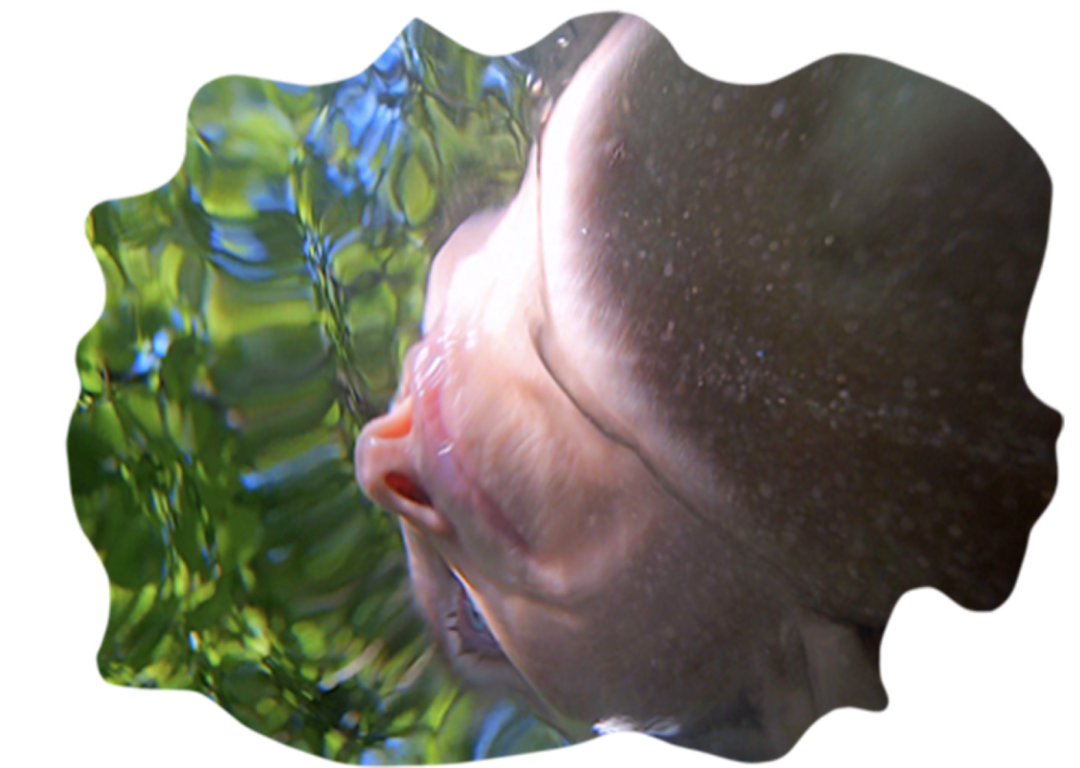
▲Pipilotti Rist 影像作品 ‘ 4th floor to mildness’, 2016, Courtesy of the Louisiana Museum of Modern Art
Winy :我认为变化是进化的序曲。在技术层面上,第一步是对图像的排序,这个序列先由你的感官决定,然后由机器,或者说电脑程序对图像进行切换。下一步可能是直接添加组或移动的要素,这时候你就无法直接编排图像的序列,但可以通过某些算法去排列组合。所以随着时间的推移,你会得到不同强度、顺序和重叠的图像,这就是我所说的进化的第二步。而第三步如你所说,可以更进一步增强互动性,让作品以某种方式对访客、树木、小鸟甚至天空的变化作出反应。
Winy: It is an evolution. Technically the first step is a sequence composed out of a group of images, which you composed yourself. After this the machine, this computer or program changes it from the one to the other. The next step could be that the mix or movement factor will be arranged directly. You can’t choreograph that, you can do that by certain algorithms, so over time you will get a different intensity, in sequence, and in overlap of the images that you have there. That is what I call step two in the evolution. Step three would be that it becomes interactive, that’s what you say, even one step further. That somehow it reacts to the visitors, or trees, birds, or even sky.
Pipilotti :确实可以分为不同的阶段,目前我还停留在第一步。从我作为观众的经验来说,鲜少有互动式作品能真正将观众纳入考虑,大部分作品优先考虑的是其本身的主张,如果是互动式的,也只是给予了观众些许选择的自由。我所期待的互动是触肤般的细致,就好像能够直观地感受彼此的温度,看到彼此的肤色共同起舞。为了做到这一点,我需要了解作品能够持续多久,何时需要作出改变。人们时常忽视一个观念:相比静止的图像,动态图像的生存周期更短,但动态图像会迫使你正视作品的时间限制。同时,我们也意识到了解作品到访者的重要性,因为参观的人群也在不停地发生变化,也许今年是一群 16 岁的孩子经常来这里参观,而明年就会变成另一批新时代的 16 岁孩子。
Pipilotti: Indeed, it has different stages. I feel like I didn’t even complete the first step. I experienced not many interactive works where I felt taken serious as participant of viewer. Often, I find it more important what the other is proposing me and if it’s interactive maybe it’s just a little choice they give me. I prefer the interactive as the caressing of the skin, is that the people see each other differently. That when they watch each other the colour of their faces or bodies, or that they start to jump around or dance. That is what I’m offering. Maybe that would be a step where I have to find out how long the things can stay and when they have to change because moving images have shorter survival then still images. It’s still something you can ignore but something that moves it forces you to pay attention and has a certain time limit. We find out, we also have to have contact with people who use it, who come there, and also they change. Maybe this year the 16-year-olds hang out there often, next year it will be the new 16-year-olds.
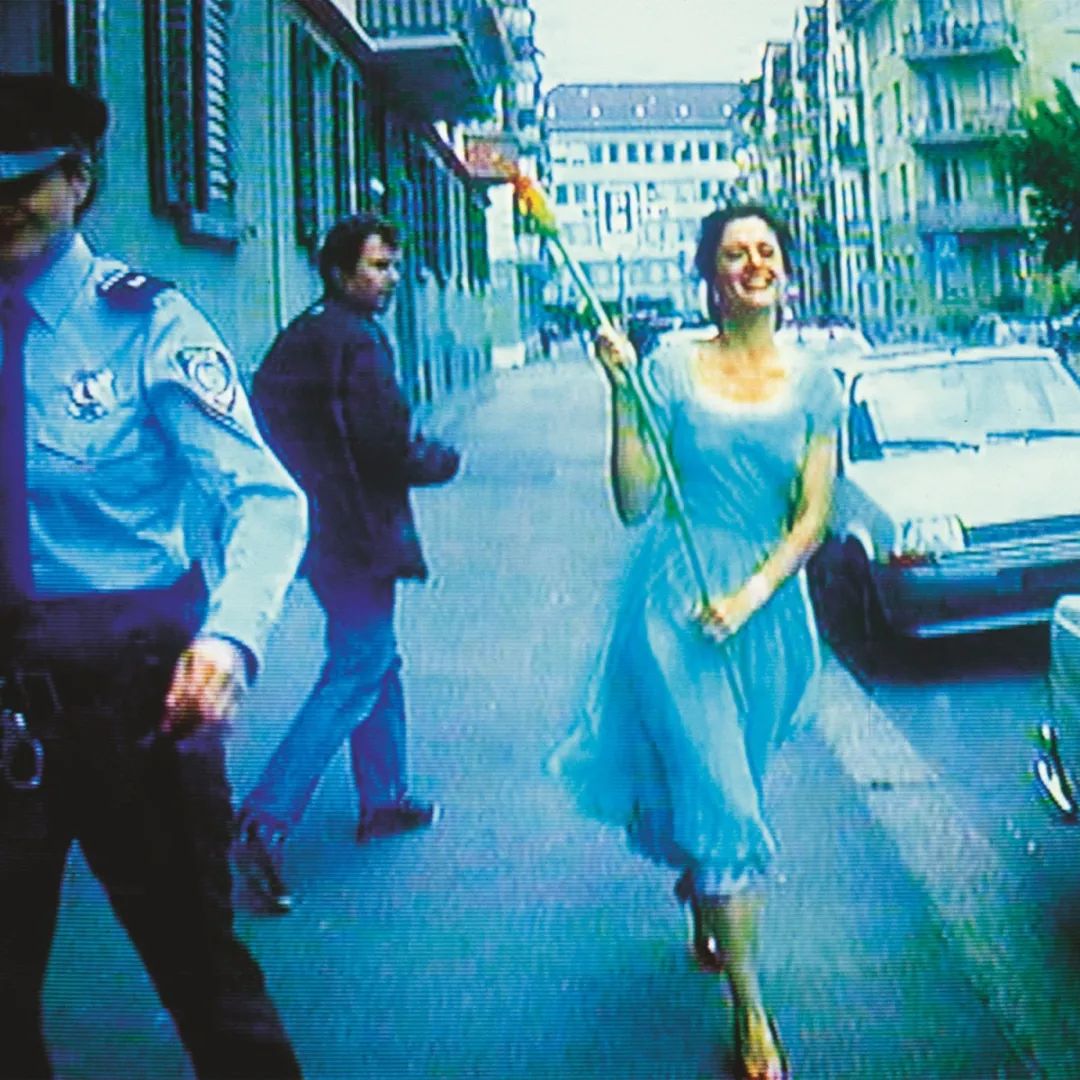
▲Pipilotti Rist 影像作品, Ever is Over All (video stll), 1997. Audio video installation © Pipilotti Rist. Courtesy the artist, Hauser & Wirth and Luhring Augustine
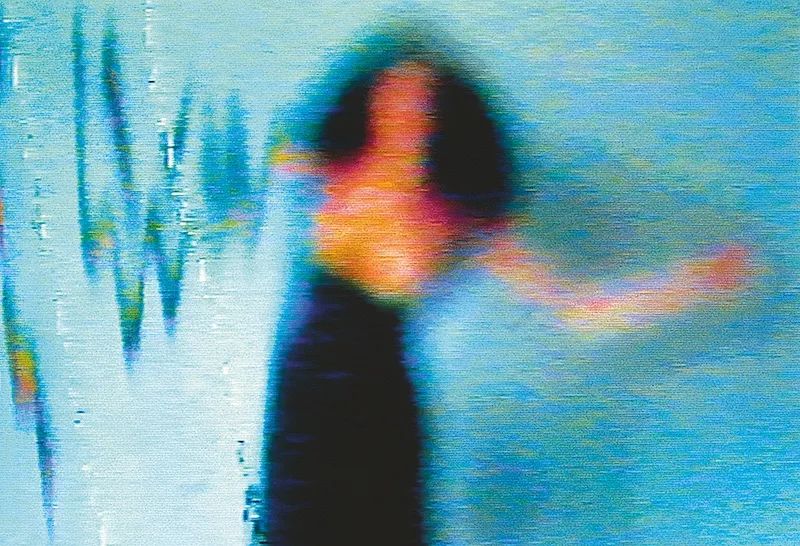
▲Pipilotti Rist 影像作品, I’m Not The Girl Who Misses Much (still), 1986, single-channel video, sound, color. © Pipilotti Rist. Courtesy the artist, Hauser & Wirth and Luhring Augustine
Winy:目前我有一个新项目是建造一座 20世纪50年代的纪念碑,设想的效果是一座漂浮在精美建筑之上的剧场,因此我们设计了一个延伸的广场,其玻璃地面下是许多新建的剧场。但我目前还没想好如何处理。或许你可以给我一些建议和想法,这片区域下的空间有 20 米高。
Winy: I am now working on a project in Russia, a monument from the fifties. A beautiful building with a theater that is floating above. So we designed a plaza that continues, because there are new cinemas below, with a glass floor, and I didn’t yet think about what to do with that. Maybe I can ask for your intervention, since there will be a 20 meter high space below.
Pipilotti:我很高兴能和你分享我的想法!在重新思考 Depot 的装置时,我将它视为艺术内核的外延,如同浓缩的颜色被喷射而出,同时建筑的外部或多或少就像艺术内核的魂魄,灯一关,魂魄就消失了。对我而言这是一个十分重要的主题,就如你所说的流动性,它有着一种沉静的、流动的特质。毕竟我们需要更多的“Troost”,也就是慰藉,这是我在荷兰工作时学到的一个单词。我从没想过要将我的装置打造成网红景点,我期待的是它在那里欢迎 Depot 的访客,并改善他们的参观体验,所以这是一个真正意义上与能量有关的装置。如果我们想缓慢地进行色彩填充,就不能“击中”周遭的人群,那是室内作品才需要的特质,去震撼观众,迫使他们深入思考,有所反应。而室外作品应该具有普适性,为所有观众营造友好的体验。
Pipilotti: I will be glad to advice you! When I re-think the depot installation, it is like the artwork’s insight moved outside. In a way is it like the colour is concentrated and it flew out, where outside it becomes more or less the ghost of the art inside. If you switch off the lights, the ghost is gone! For me this is a very important subject, the word you said fluidity, it has a calming, flowing quality. We need more “troost”, consolation, a Dutch word I learned when working in the Netherlands.My installation definitely doesn’t have the ambition to become the center of attention, no, it should greet people. It is part of the visitor experience of the depot. It starts at sunset, the colours get more intense the darker it gets. When I see how the children react, they just start to run around. It has to do with energy, very literally. If you put the colours on in slow motion, you don’t want to “hit” people with them. That is something for inside a museum, if you want to really force people to take a stance, to react. Outside a work should not push the visitors away.
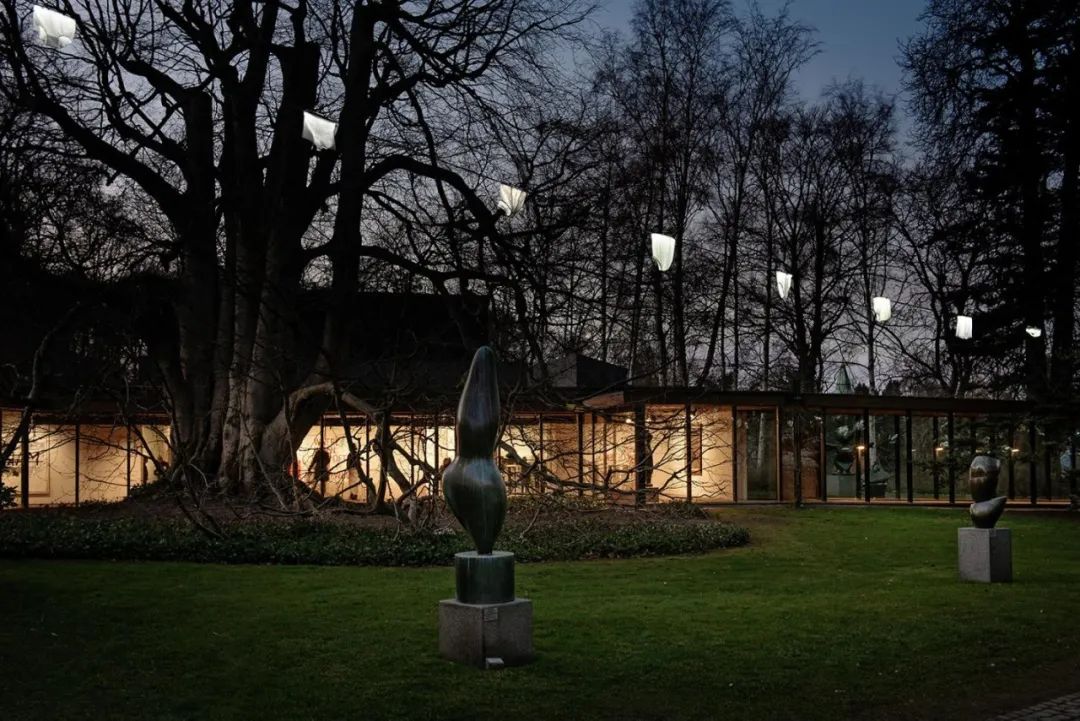
▲ Hiplights (or Enlightened Hips), 2011, by Pipilotti Rist. Courtesy of the Louisiana Museum of Modern Art. Photography: Poul Buchard / Brøndum & Co
Winy :我喜欢你前面的一个说法,“设计是一种服务”。与此同时,这个艺术装置也在细语着艺术的魂魄,但不是真正意义上的幽灵,也不是蒙德里安或巴别塔。但这种方式避免了枯燥无味,其中所传递的暗示性大于传记的意味。
Winy: I like that you say it’s a service, and at the same time the installation breathes the ghost of the art inside. The work is not literally a ghost, or literally a piece of Mondriaan or the tower of Babel. This way it is also less boring. It is more suggestive than biographical.
Pipilotti : 是的,我的作品并不是陈述轶事或讲故事。
Pipilotti: My work certainly is not about anecdotes or stories.
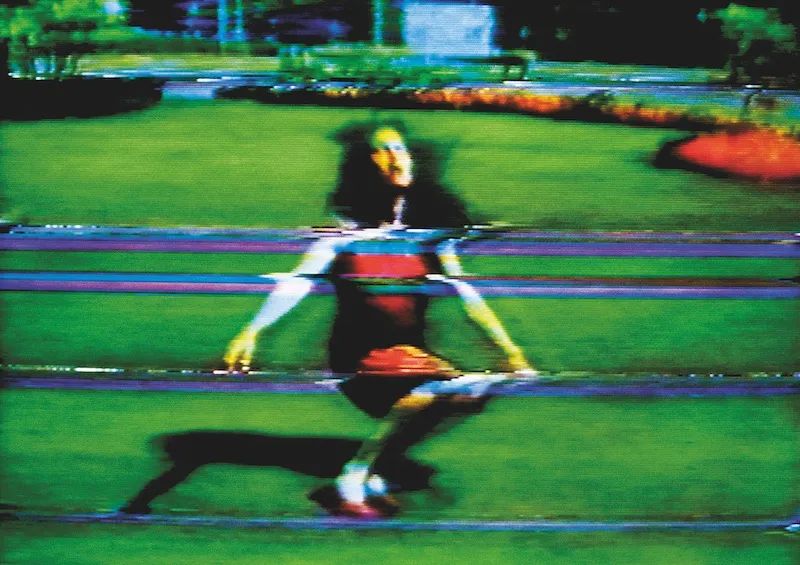
▲Pipilotti Rist 影像作品, (Entlastungen) Pipilottis Fehler ([Absolutions] Pipilotti’s Mistakes), still, 1988, single-channel video, sound, color. © Pipilotti Rist. Courtesy the artist, Hauser & Wirth and Luhring Augustine
Winy:如果我接手这个任务,我会将内部打造成一座艺术图书馆,外部暴露内部的特质。不过我也理解你所说的优点,它不像漂浮着的蒙德里安,但这意味着色彩的运用至关重要。Depot 随着时间而变化,增加了作品的延展性。既然我们已经讨论了 Depot 的诸多方面,聊一聊你的艺术灵感及未来的计划吧。
Winy: If I would have gotten the assignment, I would have made this kind of library of the art inside that we show then on the outside, since I am an architect, I work with stories. But I also see the virtue of what you say that it’s not like the Mondriaan floating by but the colors and extraction that counts, that is a bigger suggestion also for the depot that is changing over time, the artwork and value of art that is changing over time. That makes it more open. Now that we have talked about the depot extensively, I think it is advisable to zoom out and talk about inspiration and about your plans for the future.
Pipilotti :我有很多感兴趣的创作课题,其中一个在当下较为实用的是研究不同光的特质,包括人造光的历史以及人们对光的使用。我们一天中的大部分时间都身处于人造光之中。人造光、自然光、屏幕光和室内光都存在很大的问题。车灯、路灯都变得更亮了。这就是其中一项研究,我也在探索自己在这种环境下能做些什么,当然仍会以灯光设计的呈现形式,其实在实践中我面对的还是同样的问题,但我想增加一些哲学内涵。再就是光的温度,比如早上的光是温暖还是凉爽,实际上人脑会不断地进行白平衡,这是人类的一大能力,同时我们已将光的存在当作一件理所应当的事情。
Pipilotti: I have many different interests. One thing that in the moment is very practical, I am researching all the different light qualities and also the history of the artificial light and how we use light. We could do with less light. So much time of our days light is artificial. I see a big problem between artificial light and day light and screen light and room lights. Car lights also get brighter and street lanterns go up. That is one of my researches, I am asking myself what I can contribute … It’s kind of also light design, that’s the same problem, but I want to see it a bit more philosophical. Also the whole question; temperature of light, in the morning it is warmer, cooler, warmer, cooler and that our brain always makes the white balance, that’s a huge thing we are capable off, the permanent white balance we do. We are not being taken serious by the light sources given to us.

▲ 4th Floor to Mildness, 2016, by Pipilotti Rist. Courtesy of the Louisiana Museum of Modern Art
Winy :这是一个很有洞见的观察,因为在公共领域确实存在一种趋势,我们称之为生态安光,近乎日光。这种锐利的白光亮度很强,能够发挥最大的效用,让环境处于非常均匀的光色中。例如,瑞士所有的隧道灯、比利时和荷兰的高速公路路灯,这些灯光是一种全新的白光,发黄的特质已消除。很奇怪的是我们没有再使用其他类型的灯光。作为一个建筑师,我 没有答案,因为我几乎被可持续性、安全和经济规则所限制。
Winy: I find this to be a strong observation because there because indeed there is a tendency in the public realm to make a say ecological and safe light, that leads to almost this daylight. Sharp white lamps, very high to make a maximum effect, that makes our environment very even almost. The changes of all the tunnels in Switzerland for example but also the highway lamps in Belgium or the Netherlands. These lights are a completely new type of white; the orange is gone. There is no time for any other kind of light anymore, and that is a bit strange. As an architect, I don’t have an answer to that because I’m almost restricted by our sustainability, safety and our economical rules.
Pipilotti :单单光这一个主题就可以聊很久。比如 Depot 的光源安装得很高,我也不喜欢这一点。不过这部分可以再改进,总而言之我希望人们减少对技术的盲目崇拜,更不要将其存在视为理所当然。在科技面前如此被动总归不是好事。但编程领域需要更多的年轻人才,不仅要利用这些绝佳的工具,更要不断开发与拓展。
Pipilotti: We can talk a long time about lights, I also don’t like how they high they are put up at the depot site for example. Things can change. In general, I would like people to have less respect for machines, and not taking them for granted. We need more young people that also go into programming and not also only use these great tools but also develop them.
Winy :用这段话作为我们对谈的结尾再好不过了!我认为你对于科技的观点以及科技如何超越人类的论述非常具有启发与警示,我对此的回应是,我们必须创造一种认知和生活方式,通过普及编程和其他工具,减少对机器的敬畏,这也是我在建筑界所看到的情况,当我们按照规则行事,还会有更多的规则冒出来。如果你满足了新的规则,就够了吗?根本不是,因为那只满足了一小部分而已。
Winy: I think that is a beautiful quote to end our conversation with! As an architect you can set an agenda a bit more maybe than an artist. But there are boundaries. I find Pipilotti’s comparison the machine and how it overtakes us telling. We grow over time, adapt over time, in this case through the machines. I think in architecture this is also happening at the moment, we adapt over time to more ecological buildings. That self-fulfilling is what I now call “tick the boxes architecture, you make architecture and it ticks all the boxes of the demands and then you are “good”. That’s a very uncritical component.
编辑 Arden
翻译 邓宇华
摄影 Ossip van Duivenbode、
Leon van der Velden 、Ben van Loon
新媒体编辑 大野
图片 MVRDV
MVRDV建筑规划事务所由Winy Maas、Jacob van Rijs和Nathalie de Vries创立于荷兰鹿特丹,致力于为当代的建筑和都市问题提供解决方案。MVRDV的创作基于深度研究与高度协作,各领域的专家、客户及利益相关方从项目初期一直参与设计的全过程。直率而真诚的建筑、都市规划、研究和装置作品堪称典范,让城市和景观朝向更美好的未来发展。
MVRDV的早期项目,如荷兰公共广播公司VPRO的总部,以及荷兰阿姆斯特丹的WoZoCo老年公寓,都获得了广泛的国际赞誉。MVRDV250余位建筑师、设计师和城市规划师在多学科交叉的设计过程中,始终坚持严格的技术标准和创新性研究。MVRDV采用BIM技术,公司内拥有正式的BREEAM和LEED顾问。MVRDV与荷兰代尔夫特理工大学合作运营独立智库和研究机构The Why Factory,通过展望未来都市,为建筑及都市主义提供发展议程。
MVRDV was set up in 1993 in Rotterdam, The Netherlands by Winy Maas, Jacob van Rijs and Nathalie de Vries. MVRDV engages globally in providing solutions to contemporary architectural and urban issues. A research-based and highly collaborative design method engages experts from all fields, clients and stakeholders in the creative process. The results are exemplary and outspoken buildings, urban plans, studies and objects, which enable our cities and landscapes to develop towards a better future.
Early projects by the office, such as the headquarters for the Dutch Public Broadcaster VPRO and WoZoCo housing for the elderly in Amsterdam lead to international acclaim. 250 architects, designers and other staff develop projects in a multi-disciplinary, collaborative design process which involves rigorous technical and creative investigation. MVRDV works with BIM and has official in-house BREEAM and LEED assessors. Together with Delft University of Technology, MVRDV runs The Why Factory, an independent think tank and research institute providing an agenda for architecture and urbanism by envisioning the city of the future.
特别声明
本文为自媒体、作者等档案号在建筑档案上传并发布,仅代表作者观点,不代表建筑档案的观点或立场,建筑档案仅提供信息发布平台。
0
好文章需要你的鼓励

 参与评论
参与评论
请回复有价值的信息,无意义的评论将很快被删除,账号将被禁止发言。
 评论区
评论区